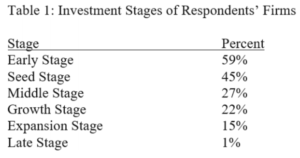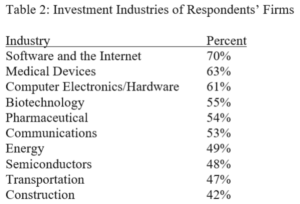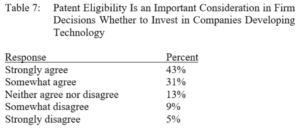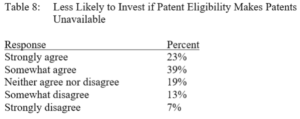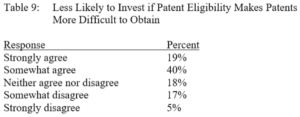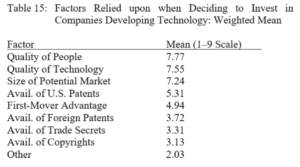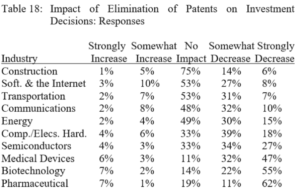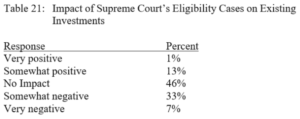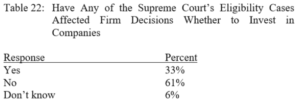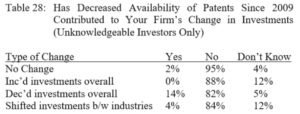The following post comes from Wade Cribbs, a 2L at Scalia Law and a Research Assistant at CPIP.
 By Wade Cribbs
By Wade Cribbs
Questions about how Chinese patent protection operates in the international patent landscape are relevant to both companies doing business in China and policymakers in the United States. China is becoming an increasingly frequent patent litigation location for major international corporations. With this new forum for patent disputes come questions about how China can handle anti-suit injunctions and parallel proceedings regarding fair, reasonable, and non-discriminatory (FRAND) agreements for standard-essential patents (SEPs).
To discuss these questions, the Hudson Institute hosted a virtual panel presentation last week entitled Patent Litigation in China: Navigating a Changing Environment. The panel, which was moderated by Hudson Institute Senior Fellow Urška Petrovčič, included Mark Cohen (Distinguished Senior Fellow, University of California Berkeley; Director, Berkeley Center for Law & Technology, Asia Intellectual Property Project), Vivienne Bath (Professor of Chinese International and Business Law, University of Sydney), and He Jing (Founder, GEN Law Firm; Executive Director, Beijing Zhongguancun Intellectual Property Strategy Research Institute).
Mr. Cohen sees differences in patent litigation between western countries—such as the United States and the European Union—and China, particularly with injunctions due to China’s quasi-civil law system and the Chinese economy’s size. He does not view the recent emergence of anti-suit injunctions in China as unusual because they were not necessary, given that China readily awards injunctive relief. It is not unusual for the courts to get through litigation and appeal in China before a U.S. court has commenced discovery. Therefore, a litigant could initiate proceedings in China after suing in the United States and receive an injunction from the Chinese court, using it to compel the party to settle any parallel proceedings.
Mr. Cohen sees no real difference between the current practice of anti-suit injunctions and Chinese courts’ prior practice of ignoring any parallel proceeding. He agrees with Prof. Bath that the shift of Chinese courts to anti-suit injunctions is motivated by judicial sovereignty and the desire to exercise power over international FRAND rate disputes in order to protect Chinese business interests. Mr. Cohen is concerned that this desire is expanding to dictate international behavior in technological markets by leveraging SEP holders.
Mr. Jing believes that the most important SEP disputes in China are focused on the issuance by Chinese courts of anti-suit injunctions, which he notes are relatively recent for these courts. Chinese courts award these injunctions in such circumstances as preventing Huawei from enforcing a German court’s holding of a FRAND rate that was significantly higher than the rate issued by the Chinese courts. Similarly, Chinese courts have issued preliminary anti-suit injunctions against Sharp Corporation, preventing Sharp from initiating litigation in Germany after it began litigation in China.
Mr. Jing admits the logic is straightforward in the case of cell phone manufacturing, since most of the global manufacturing occurs in China. Therefore, he posits that China should have a say in cell phone SEP FRAND rates. However, he is unsure whether there is proper jurisdiction for such cases. To claim jurisdiction in some cases, Chinese courts docket FRAND disputes as contract cases. Mr. Jing’s problem with FRAND as a contract is that there is no concluded contract, and he is not convinced that such disputes meet the specific legal standard required by Chinese law to hear foreign and international contract disputes. Mr. Jing is concerned that Chinese courts are stretching beyond their bounds for jurisdiction and service to hear cases.
Prof. Bath observes that since the Chinese court systems are now fully equipped to handle IP cases, they are incredibly litigious. In this setting, the Chinese Communist Party is trying to tighten its control over the courts’ behavior as the courts streamline the process and improve injunctive enforcement. Prof. Bath sees these two forces resulting in the Chinese court system seeking to use Chinese law in an international setting through attracting dispute resolution to China. The China International Commercial Court and the one-stop diversified dispute resolution, which combine mediation and litigation in the court system, are examples of how the Chinese government is trying to attract foreign arbitration to China.
However, when it comes to international agreements, Prof. Bath notes, China has tended to agree to international instruments only where it is exempt from intellectual property judgments. Prof. Bath warns that, while China is taking steps to make its courts more available for international litigation, it is necessary to remember that the court does not always decide adjudication. Senior judges who did not sit for the case may make the final adjudicative decision, and this risks politicizing any crucial adjudication rulings.
Professor Bath sees the Chinese courts’ problem with parallel proceedings in the form of anti-suit injunctions stemming from its focus on judicial sovereignty. This focus results in China not having many tools to handle parallel proceedings. The Chinese courts will hear almost any suit brought before the court and will not refuse the case because it is already being heard elsewhere, unless a foreign judgment has already been issued and enforced in China. These practices result in foreign judgments being rarely enforced in China as a result of a Chinese court’s having already begun proceedings.
To watch the video of the panel discussion, please click here.
 By Connor Sherman
By Connor Sherman By Austin Shaffer
By Austin Shaffer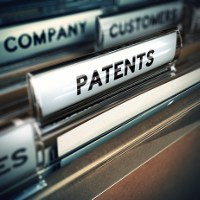 By Terence Yen
By Terence Yen